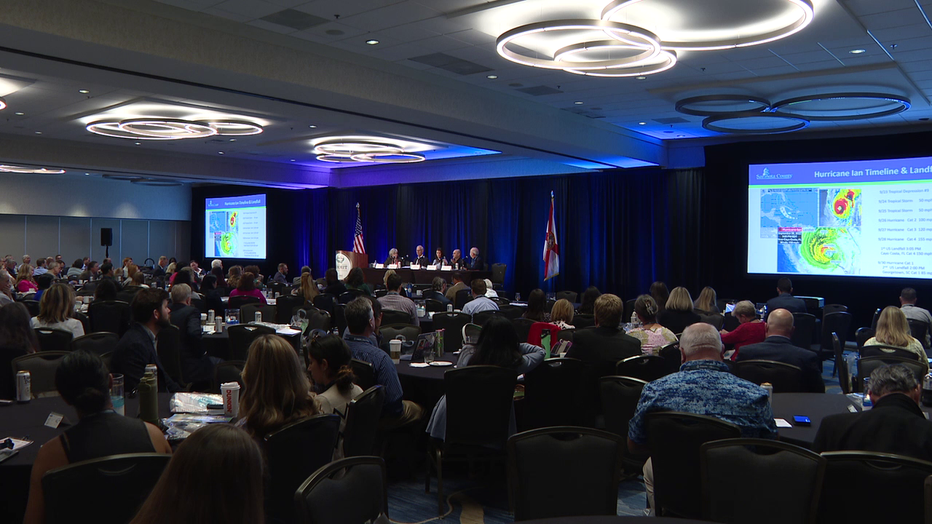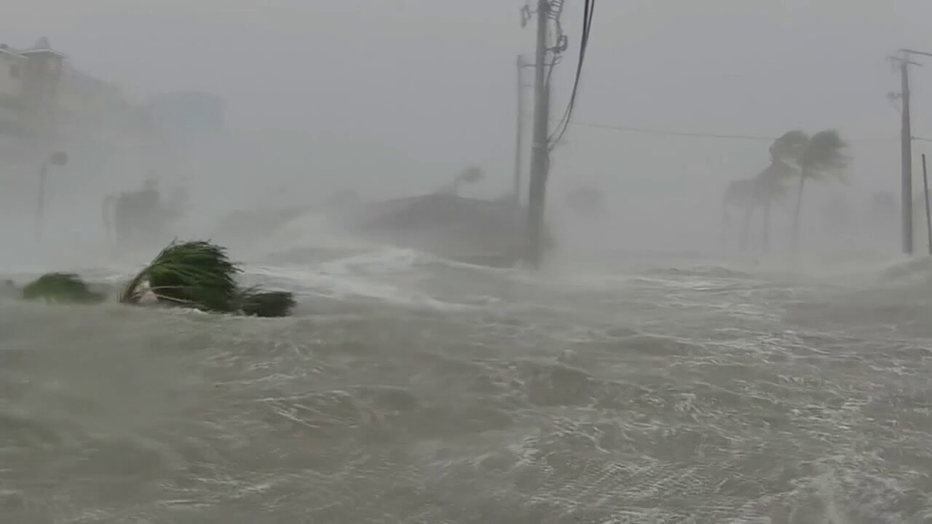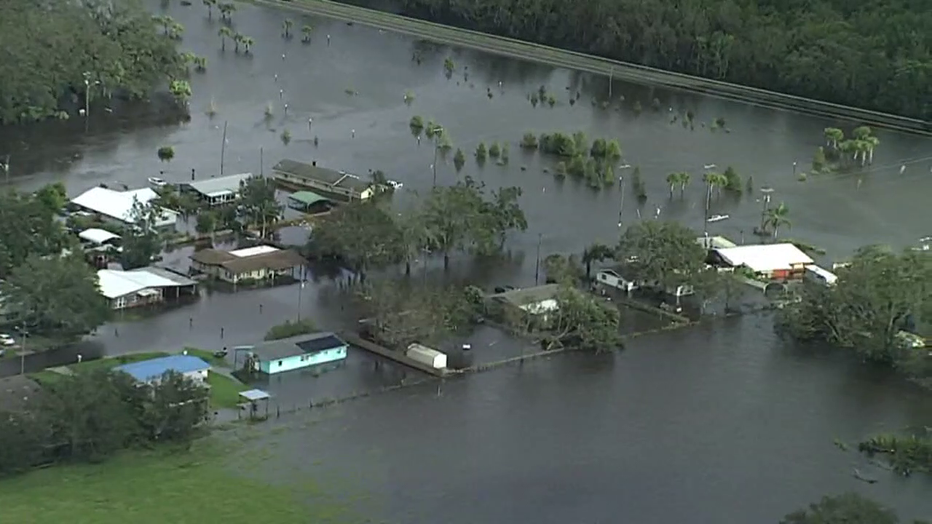Regional resiliency summit kicks off with leaders hoping to better prepare for hurricane season

Leaders discuss preparations for hurricane season
Hurricane season is just a month away, and state and local leaders discussed stronger ways to prepare.
CLEARWATER, Fla. - Hurricane season is just four weeks away, and Thursday, local and state leaders discussed stronger ways to prepare as a region at the Tampa Bay Regional Resiliency Leadership Summit.
Chris Holley, the interim town manager of Fort Myers Beach, spoke at the summit, sharing what he and his town learned from Hurricane Ian nearly eight months ago.
"Our goal here today is to help other communities prepare," Holley said. "So, what we've shared today is some of the lessons that we learned after Hurricane Ian, primarily dealing with how to be prepared to respond through contracted service, procure services per FEMA's standards. You know, staffing wise, what to be prepared for, how to deal with all the volunteers that show up and to obviously express our thanks to our regional partners that came to Fort Myers Beach to help us, but to help them prepare."
RELATED: New resiliency strategies among discussions at annual Regional Planning Council Summit
Stephanie Stachowicz with the Florida Division of Emergency Management said the agency learned similar lessons during Ian.

"We the division in the state of Florida will definitely have an all-encompassing debris contract [next storm]," she said. "We will also have a lot of lessons learned from temporary housing and how we can improve the process next time if we choose to do a housing mission, which I'm sure we will, because we're more forward leaning now. And I would say just every storm is different, and so to be flexible."
Holley said the biggest challenge during Ian was getting people to evacuate.
"People get so focused on this cone that the weather stations show and think if they're outside the cone, that they're safe, and it's not always the case," Holley said. "If you're in a flood zone, and you're under threat of a storm, you need to move. And so, everyone should have a plan for getting out of the way."
READ: Hurricane shelter operations run drills in case of evacuation orders
It’s an issue Pinellas County Director of Emergency Management Cathie Perkins has also experienced.

"Our concern is that people aren’t moving out of harm’s way," she said. "We want to make sure that people heed the warnings, that they’re getting the information. We want to make sure that people understand all of the risks that are involved in the storm. Don't just look at the cone. Look at where the winds are. Look at the wind field and look at how big the storm surges get out of those risk areas into areas outside of evacuation."
Perkins said the county saw an 80% drop in the number of people who went to shelters during Ian compared to Hurricane Irma.
PREVIOUS: National Hurricane Center announces changes ahead of upcoming 2023 season
She said the summit also gives them a chance to create relationships with other local, state and federal partners before another potential storm.
"It's a great time for us to discuss opportunities, what we can do to mitigate, what we can do to harden, how do we make our communities stronger in the face of these events that we have, and it's going to take a lot of us coming up with creative solutions, looking at funding solutions," Perkins said.

Rob Young, the director of the Program for the Study of Developed Shorelines at Western Carolina University, said it’s not just storms we should be concerned about. We also need to address sea level rise.
"Every storm is an opportunity to do things better," Young said. "So, when we have a big storm like Hurricane Ian that has removed a tremendous amount of infrastructure in Southwest Florida, we should be putting that infrastructure back in a way that's very thoughtful. Don't just put everything back where it was."
MORE: Local leaders travel to Sanibel to learn from Hurricane Ian, recovery efforts
"You may say, ‘well, you know, what does that really matter?’ Well, a lot of public funds go to rebuilding that infrastructure, especially utilities and roads and things like that. So, if we want to save us all money, then we need to have a plan for how we rebuild after storms," Young said. "Sea level rise is going to drive dramatic changes in our communities over the next 10 years. Rising sea level is maybe even more important to address than storms here in the Tampa Area. We may be lucky, and we may not actually get that big storm in the next 10 years, but we will get sea level rise."
Mayors from some of the beach communities also discussed how they’re balancing tourism and quality of life for residents with sea level rise and flooding. The summit continues Friday when Congresswoman Kathy Castor will talk about federal climate initiatives. There will also be a panel on how to pay for resiliency projects and new ideas when it comes to resiliency.

